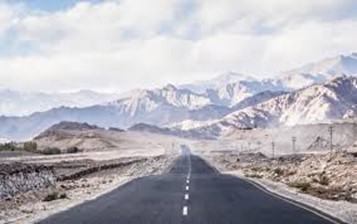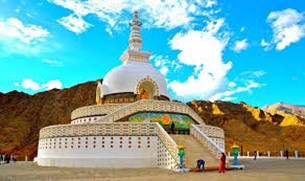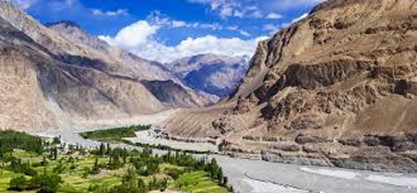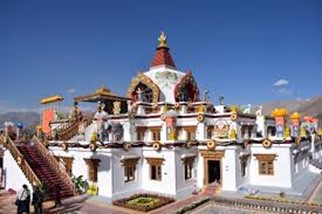
Leh, is the joint capital and largest town of the recently added Union Territory of Ladakh in India, a dream destination for many travellers and the holy grail for the adventure enthusiasts. Leh has the most iconic natural beauty, its landscape surrounded by the high Himalayan Mountains and the Karakoram range. Its 3000 meters high altitude mostly makes it a cold desert as it lies in the rain shadow area. The scenic landscapes, desert mountains along with deep blue water bodies, rainbows in the sky, and monasteries take travellers to a whole new world.

Most visited places in Leh include Pangong Tso, Nubra Valley, Tso Moriri, and Hemis Monastery. Pangong Tso (Tso means Lakes) has always been a famous destination for travellers, now moreso because of the Hindi movies like ‘jab tak hai jaan’ and ‘3 Idiots’. This 106 km long crystal blue waterbody that ends in China, is surrounded by magnetic hills and open clear skies. While travelling to the lake, one can stopover at Spangmik Village, a remote village, 156 km east of Leh. The village that is accessible by the highest motorable road- Chang La pass throughout the year, offers camping facilities and homestay for the convenience of vacationers.

Leh is famous for its high altitudes and numerous passes connecting various locations in this difficult terrain. Nubra Valley is well known for the world’s highest motorable road- Khardung La pass, Bactrian camels, and its unique landscapes. The glacier captivating valley, painted in different hues, is breathtaking during sunsets. The valley has two small, green villages- Hunder and Diskit. Its stone and brick-laid houses encircled with mountains, are a view to behold. Just 80 kilometers farther from the Hunder village lay the most scenic village of India – ‘Turtuk’. Situated in the middle of Shyok River and mountains, the village grows cherries, apricots, and blueberries.

Then comes the less known Lake ‘Tso Moriri’ (Tso stands for Lakes and Moriri stands for mountains), situated at an altitude of 4000 meters. It is considered to be the remotest place of the region, travelled by a very few people. The next stop after Tso Moriri is Hemis Monastery, built-in 1630. It is the biggest monastery of Ladakh, an elegant representation of Tibetan culture. All four sides of the monastery are decorated with coloured prayer flags, that are believed to transmit prayers to Lord Buddha, each time they flutter with the breeze.

Every year monastery organizes a two days Hemis festival on the 10th day of Tibetan lunar month that usually falls in early June. It attracts thousands of tourists from around the world. One can travel to Leh at any time of the year, yet early June is the best time to travel by road. Snow begins to dissolve into the lakes; snowy roads, mountains, and most of the street courses to Leh open up during this time. Most festivals are organized during this month like Saka Dawa, Yuru Kabgyat, and Hemis Festival.
One must visit this frozen heaven to explore its secrets and admire its breath-taking beauty. The landscape here is unlike anywhere in India and worldwide and so much of it is still unexplored and undocumented.